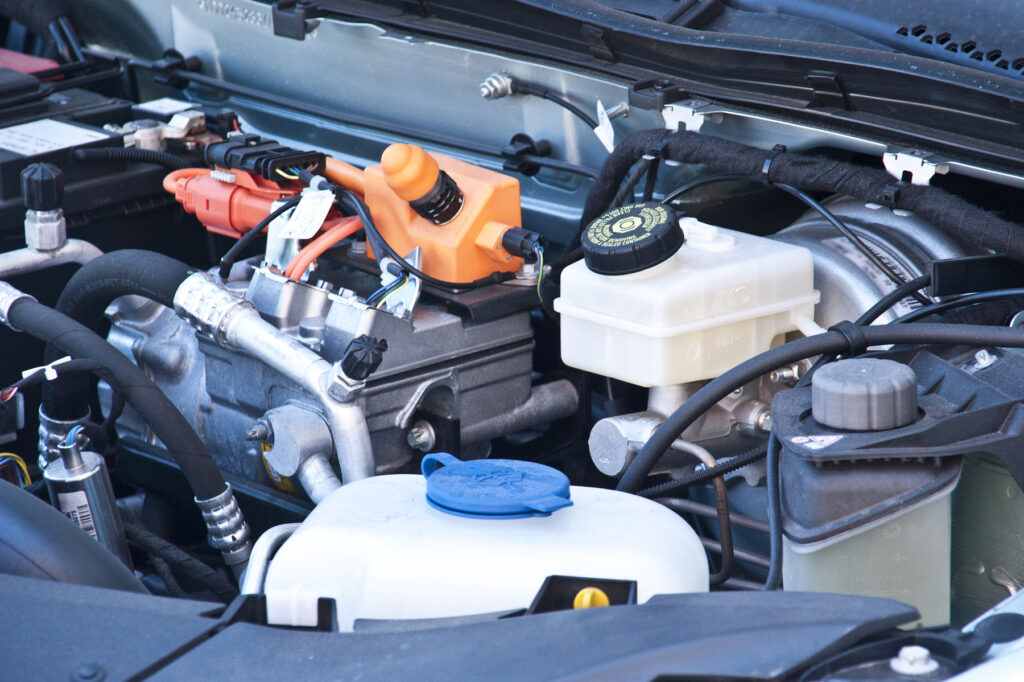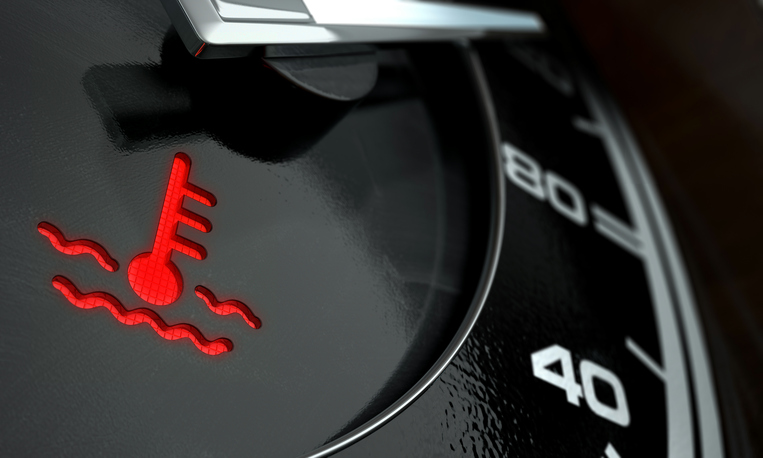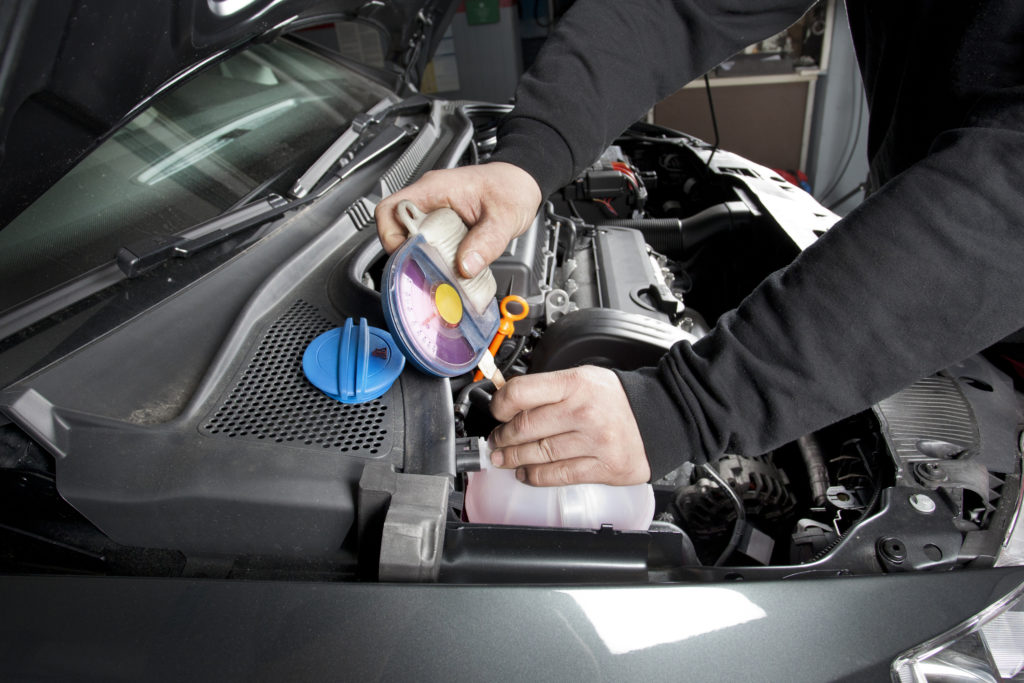A car’s cooling system relies on quality coolant/antifreeze that has been tested in extreme temperatures, and is free from dirt and particles that could hinder performance or lead to the corrosion of engine components. That means it’s important to drain and refill the cooling system at the appropriate time or mileage intervals, ensuring optimum cooling performance and good engine health.
If your coolant is getting old, your car has racked up the miles, or you’ve noticed a change in the colour and consistency of the coolant/antifreeze in the reservoir, it’s time to flush the cooling system and replace the old fluid. Before you wince at how much that’s going to cost at a garage, we’re here to offer practical guidance and advice on flushing the cooling system yourself – using Prestone Cooling System Flush to achieve professional results without the expense.
Click the quick links below to find the information you need:
Quick Links
- Do I need to flush my car’s cooling system?
- How often should I flush the cooling system and radiator?
- How can I tell when my cooling system needs to be flushed?
- What are the benefits of flushing my car’s cooling system?
- How to flush your radiator and cooling system: 8 practical steps
- How to Use Prestone Cooling System Flush
Blog Sign Up
"*" indicates required fields
Do I Need to Flush My Car’s Cooling System?
In a word, probably. Over time, inferior quality coolant/antifreeze can pick up particles from around the engine, causing corrosion which can lead to leaks and other expensive repair jobs. Removing these deposits and restoring the corrosion protection is vital to a safe and fully-functioning cooling system, especially if you want to avoid unexpected breakdowns brought on by overheating, leaks or engine failure.
How Often Should I Flush the Cooling System and Radiator?
Mechanics and car manufacturers all offer conflicting advice on how often to flush a cooling system. The right interval will depend on a range of factors – from the age and condition of your car, to the type of driving you do most often and the variety of coolant/antifreeze in the reservoir.
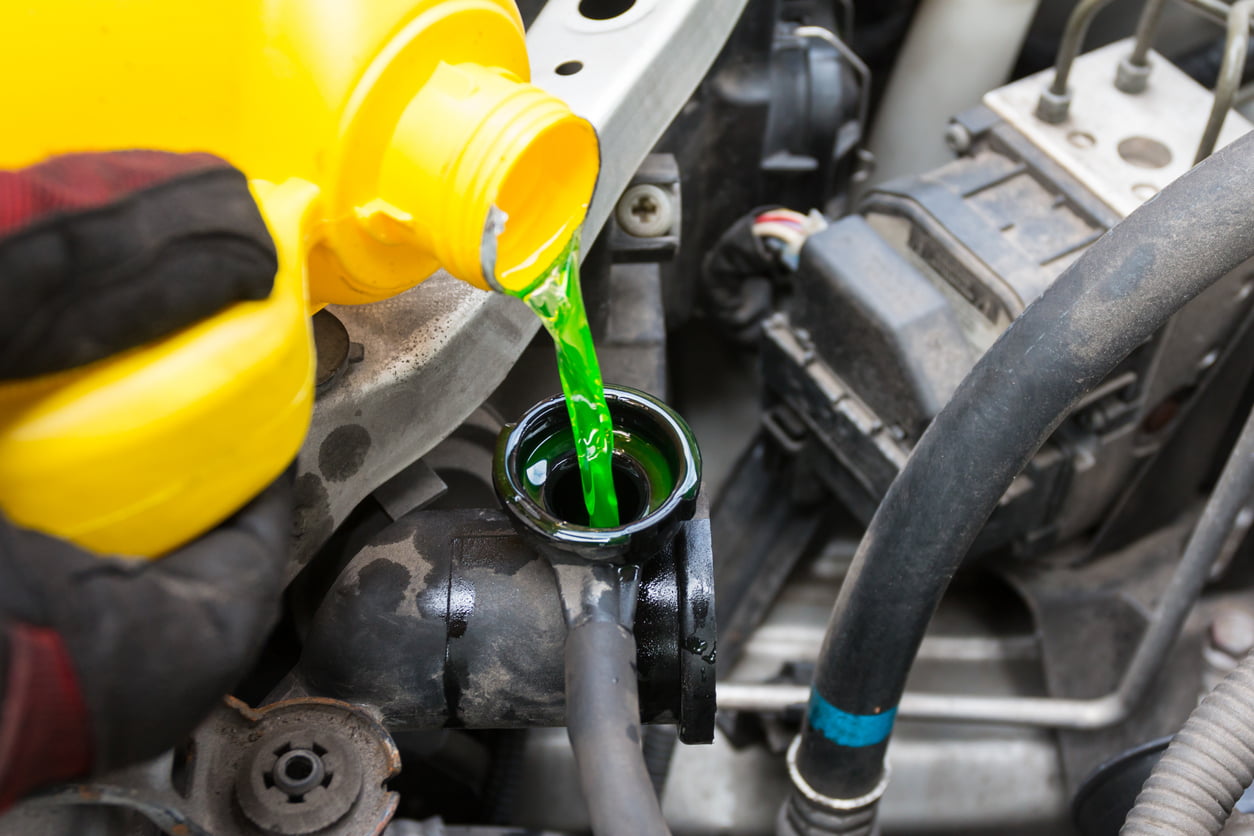 If in doubt about when to flush your car’s cooling system, consult your vehicle handbook or the instructions provided by the coolant/antifreeze manufacturer.
If in doubt about when to flush your car’s cooling system, consult your vehicle handbook or the instructions provided by the coolant/antifreeze manufacturer.
If your cooling system is running with the new Prestone coolant/antifreeze, you’re good for 10 years or 300,000 miles.
How Can I Tell When My Cooling System Needs to be Flushed?
The easiest way to work out when to flush the cooling system is to regularly check the condition of the coolant/antifreeze in the reservoir. Open the reservoir and check the colour and consistency of the fluid. If it’s murky, cloudy or thick, it will need replacing.
Of course, you may notice the signs and symptoms of poor coolant/antifreeze quality before you’ve even thought to check its condition. Common warning signs that could indicate bad coolant/antifreeze include:
- A low coolant/antifreeze warning light on the dash
- Cool air coming from the vents on a hot setting
- The engine temperature gauge slowly rising to the red zone
- A Service Engine or Check Engine warning light
Notice any of these signs and symptoms, and you should book your car in at the garage sooner rather than later to avoid a larger repair or breakdown.
What Are the Benefits of Flushing My Car’s Cooling System?
Apart from peace of mind, here are some of the benefits of flushing your car’s radiator and cooling system:
- Removes harmful deposits and scale: Sludge and particles are common in the radiator and hoses, and can lead to more serious engine problems. A flush will rinse these out, for optimum performance.
- Lubrication: Replacing tired coolant/antifreeze with a new batch will lubricate moving parts in the cooling system, such as the water pump. This will extend the life of key components in the system.
- Improved temperature and corrosion protection for the engine: Opt for a better-quality coolant/antifreeze following a flush, and you’ll better protect your engine from extreme temperatures and corrosion – helping with performance and improving its lifespan.
- Knowing exactly what’s in your engine: If you buy a used car, it’s difficult to know what kind of coolant/antifreeze is in the system, its quality, and how often it’s been mixed with other fluids. Replacing old for new after a flush means you know exactly what’s in charge of protecting your engine.
How to Flush Your Radiator and Cooling System: 8 Practical Steps
Now that you know the why and the when of flushing a cooling system, it’s time to show you how it’s done in eight simple steps.
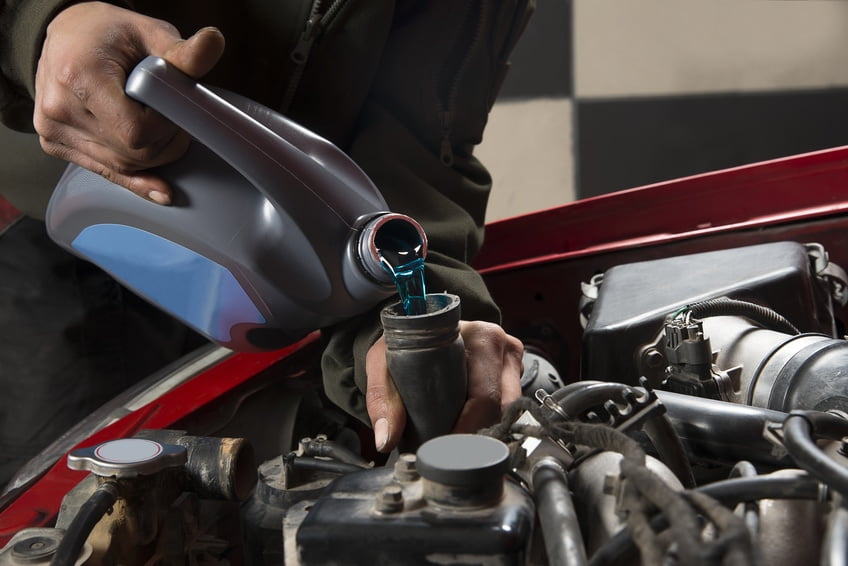 Step 1: Make sure the engine is cool
Step 1: Make sure the engine is cool
Never start work on a cooling system flush when the engine is still hot or even warm. Coolant/antifreeze can be extremely hot, and will retain its heat for hours after the engine was last running.
Step 2: Jack up the front of the car for easy access (optional)
You’ll find it easier to get at the radiator drainage point (under the car) if you jack up the front two wheels.
Step 3: Pop the bonnet, find the radiator, and give it a good clean
Clean the radiator with warm, soapy water, removing all dirt and grime (especially around the cap). This will ensure that no dirt and debris can drop into the radiator and cause problems inside the cooling system.
Step 4: Check the condition of the radiator
While you’ve got the car jacked up and the bonnet open, you can give the radiator a good once-over to check its condition. Look for signs of rust and corrosion that could be affecting the performance of the cooling system. You should also check the two hoses running from the radiator to the engine (feed and return) for any signs of damage or leaks.
Step 5: Place a pan, bucket or bowl beneath the radiator drainage valve
Make sure the container you choose is large enough to catch all the fluid which drains from the radiator and cooling system. Place it directly beneath the drainage valve, which is usually attached to the bottom of the radiator on the left or right-hand side. The valve should have a bolt at the end, which is often covered by a plastic top that can be easily removed with a screwdriver.
Step 6: Drain the radiator by opening the drainage valve
Wearing gloves, twist open the bolt on the valve (you may need to use a socket and ratchet, or a spanner). The coolant/antifreeze will begin to drain out. When the flow has reduced to a drip, tighten the drainage valve until you begin flushing, and safely store the old coolant/antifreeze (your local mechanic can recycle this for you).
Step 7: Flush the system
To flush with water and remove any leftover residue from the old coolant/antifreeze, top up the radiator with clean water using a hose, and replace the radiator cap. Then, start the engine and leave it running for 15 minutes. Wait for the engine to cool fully, then repeat the steps above to drain the water from the system.
Step 8: Add new coolant/antifreeze to the fill line
Now it’s time to add the new coolant/antifreeze to the reservoir. Following the manufacturer’s instructions, fill the reservoir with fresh coolant/antifreeze to the fill line. When it’s filled, don’t replace the cap immediately. Instead, run the engine for 15 minutes with the interior heater turned on to maximum. This will bleed any air pockets from the radiator before you reseal the system with the pressure cap. After 15 minutes, switch off the engine, replace the cap, and you’re done. Remember to keep an eye on the level over the next week or so and top-up to the fill line if required.
How to Use Prestone Cooling System Flush
To achieve professional results when flushing your car’s cooling system, we’d recommend Prestone Cooling System Flush. Developed to offer a superior flush, our powerful flush formula eliminates scale, corrosion and oil contamination – helping to maintain parts and performance in the long term.
Prestone Cooling System Flush is safe to use in both petrol and diesel engines, and offers a deep clean for a range of components within the cooling system, including metals, gaskets, hoses and plastics. Simply use the product in place of water when flushing the cooling system, for a professional clean that will help extend the life of your engine.
Using Prestone Cooling System Flush is easy – just follow the steps below for easy application:
- Drain the system per the instructions above.
- Pour Prestone Cooling System Flush into expansion tank and top up with water to the fill line. Then, run the engine for 45-60 minutes.
- Drain the system again, flush once more with water, before filling the system with Prestone Coolant/Antifreeze. This will ensure maximum protection for your car’s cooling system.
Tip – for best results, use Prestone Cooling System Flush followed by our high-performance Coolant/Antifreeze. Offering 10 years of guaranteed protection for your car’s cooling system, it provides outstanding protection and lubrication for the engine – so you can be confident your car is protected in all conditions.
At Prestone, our high-performance coolant/antifreeze offers maximum protection for your engine. It protects against corrosion for 300,000 miles or 10 years, doesn’t freeze down to -37°C and offers boil over protection to 129°C. Find out more by visiting the official Prestone homepage.


